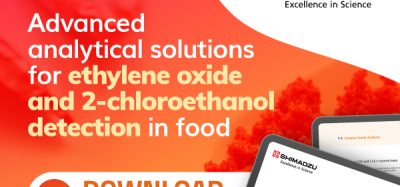New microscope technique could speed up identification of deadly bacteria
- Like
- Digg
- Del
- Tumblr
- VKontakte
- Buffer
- Love This
- Odnoklassniki
- Meneame
- Blogger
- Amazon
- Yahoo Mail
- Gmail
- AOL
- Newsvine
- HackerNews
- Evernote
- MySpace
- Mail.ru
- Viadeo
- Line
- Comments
- Yummly
- SMS
- Viber
- Telegram
- Subscribe
- Skype
- Facebook Messenger
- Kakao
- LiveJournal
- Yammer
- Edgar
- Fintel
- Mix
- Instapaper
- Copy Link
Posted: 8 June 2015 | Victoria White | No comments yet
A new way of rapidly identifying bacteria, which requires a slight modification to a microscope, may help the food industry screen against contamination…


This image shows laser light bouncing off of individual bacteria under the microscope, creating holographic images of them, and then using a mathematical transformation and computer software to analyze the images and identify them by comparing them to other, known bacteria. CREDIT: Young-Ju Jo and YongKeun (Paul) Park, KAIST
A new way of rapidly identifying bacteria, which requires a slight modification to a simple microscope, may help the food industry screen against contamination with harmful pathogens, according to researchers at the Korea Advanced Institute of Science and Technology (KAIST).


This image shows laser light bouncing off of individual bacteria under the microscope, creating holographic images of them, and then using a mathematical transformation and computer software to analyse the images and identify them by comparing them to other, known bacteria. CREDIT: Young-Ju Jo and YongKeun (Paul) Park, KAIST
The new approach involves bouncing laser light off individual bacteria under the microscope, creating holographic images of them, and then using a mathematical transformation and computer software to analyse the images and identify them by comparing them to other, known bacteria. The software uses a machine-learning algorithm – the sort computers connected to security cameras might use for automated facial recognition.
The new approach could provide almost immediate identification of dangerous bacteria
If the approach proves to be effective in controlled clinical trials, it could lead to a powerful new way of routinely and almost immediately identifying dangerous bacteria – much faster than the days it normally takes to grow or “culture” the microbes in the laboratory. Also routinely used today is a newer method for rapidly identifying bacteria based on a DNA-analysis technique called quantitative polymerase chain reaction (qPCR), but it still may take hours to return a result, and it requires expensive sample preparation that is often cost prohibitive for routine use.
“Employing laser holographic techniques, we achieved rapid and label-free identification of bacterial species at the single bacterium level with a single-shot measurement,” said physicist YongKeun Park, who led the KAIST team. “This means the present method can be utilised as a prescreening test for point-of-care bacterial diagnosis for various applications including medicine and food hygiene.”
“We have also developed a compact portable device, so called quantitative phase imaging unit (QPIU) to convert a simple existing microscope to a holographic one, in order to measure light scattering patterns of individual bacteria, which can then be used to identify bacteria species for rural areas and developing countries,” said Park. “Our team has plans to go to Tanzania next month for a field test.”
The researchers were able to distinguish between four types of bacteria with an accuracy greater than 94%
In their initial experiments, Park and his colleagues showed as a proof of principle that they could identify bacteria with high accuracy. They examined four different bacterial species (Listeria monocytogenes, Escherichia coli, Lactobacillus casei and Bacillus subtilis). The first three are all pathogens known to infect humans through the food chain or via hospital-acquired infections. The fourth is a harmless bacteria used in laboratory research but of great interest because it is closely related to the deadly Bacillus anthracis, which is the base for Anthrax.
Under a microscope, all four of these rod-like bacteria look nearly identical. They would be virtually impossible to distinguish. The KAIST team, however, sorted them using the QPIU process with an accuracy greater than 94%.
The technique involves scattering light off the bacteria under the holographic microscope and then applying a mathematical function known as a Fourier Transform to the holographic images. The Fourier Transform allows them to define a distinct, fingerprint-like light scattering pattern for any given bacterial cell. They then applied software they designed to the analysis, which used a conventional approach to statistical classification known as machine learning – a sorting strategy based on pattern similarities that has been extensively used in applications like facial recognition software. This was the first time anyone had applied machine learning to Fourier Transform light scattering data, Park said.
They are now looking to extend their initial work to see if they can distinguish between several types of bacterial subgroups.
The new approach is described in journal Optics Express.









